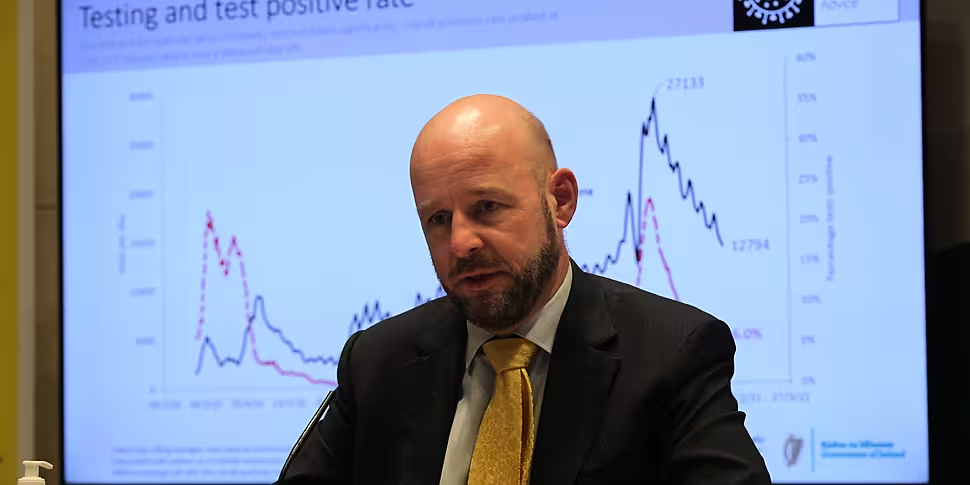The decline in coronavirus cases has slowed down and hospitalisations have stalled, according to the National Public Health Emergency Team (NPHET).
The reproduction number has risen slightly over the past week, to between 0.65 and 0.85.
It said this was mainly due to the fact that almost 90% of transmissions are from the higher-transmittable B117 variant.
It comes as 901 new cases, and 47 additional deaths were reported on Thursday.
While 771 COVID-19 patients are in hospital, which includes 151 in ICU.
Professor Philip Nolan, chair of the NPHET Irish Epidemiological Modelling Advisory Group, says people are suppressing the virus but not as much as before.
"People are trying as hard as they have been over the last six weeks to suppress the disease - they're succeeding - we're just collectively finding it somewhat more difficult in the last few weeks compared with the preceding weeks".
"The number of people being admitted to hospital per day seems to have plateaued at around 50 new cases per day, and that's an obvious cause for concern.
"163, on average over the last seven days, in Intensive Care - and that is falling and continues to fall".
He also said incidence rates are increasing in those aged 24 and under - partially due to increased detection of asymptomatic close contacts in household settings, but also because of a "very small increase" in social mixing in those aged 19 to 24.
He also said the predictions for the coming weeks have been changed, due to the rising 'R' number.
"If we can keep [the] reproduction number between 0.7 and 0.9 over the coming weeks - which we've shown over the last three or four weeks we can do - we'd expect to see somewhere between 400 and 500 cases a day around the 1st of March.
"And somewhere between 200 and 350 cases per day by mid-March.
"So if we can keep this up, we will continue to see improvements in the level of disease and those improvements... will protect the vulnerable, protect our health service and give us options into the future".
And Prof Nolan said there is "significantly less testing" in the community, owing to less symptomatic disease.
"The demand for testing in very early January was extraordinarily high, at almost 30,000 tests per day.
"We're now down at about a little bit less than half that number - about 13,000 tests per day on average over the last five days".









